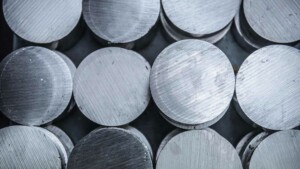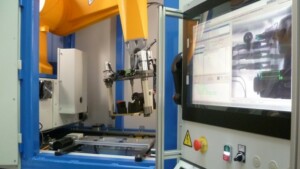Materials control
Materials testing is an essential step in many industrial processes to guarantee the quality, safety and conformity of finished products. It involves assessing the physical, chemical or structural characteristics of the materials used in manufacturing.

Why controlling materials?
In various industrial sectors such as aeronautics, automotive, nuclear and metallurgy, materials testing is crucial to guarantee product quality and reliability.
For example, in the aeronautics industry, where safety is paramount, the materials used to manufacture components must undergo rigorous testing to detect any potential failures that could compromise the aircraft’s structure.
Similarly, the hardness of metals used for machining or industrial grinding tools is highly dependent on their composition. Controlling this composition is essential to ensure the durability and performance of these tools.
Material control using magnetic saturation measurements
Magnetic saturation measurement is a widely used technique for controlling the composition of ferromagnetic alloys such as steel.
The method is based on the principle that the magnetic saturation of a material depends on its composition. By measuring the magnetic saturation of a sample using a specific device , engineers can quickly, simply and accurately verify the alloy’s composition: the residual austenite content, the nickel cobalt content, or the carbon content of cemented carbides are all measurements accessible to this technique.
This helps guarantee the quality and conformity of materials used in industrial production, as well as preventing potential failures in finished products.

Materials control using X-rays
Materials testing using X-rays is a widely used non-destructive method for inspecting the internal structure of materials.
The technique relies on the ability of X-rays to penetrate materials and produce a detailed image of their internal structure.
Using this method, engineers can detect internal defects such as cracks, fractures, porosities and inhomogeneities, without damaging the material itself. This allows potential problems to be identified at an early stage of production, helping to guarantee the quality and reliability of finished products.
These material health checks often complement other types of X-ray inspection.

ASSOCIATED SETSMART TECHNOLOGIES
Visit the technology pages for more information on the control techniques used
